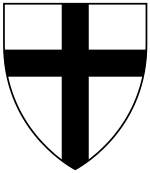


The Battle of the Vorskla River -1399
The Battle of the Vorskla River was a
great battle in the medieval history of Eastern Europe. It was fought on August 12, 1399, between the Tatars, under Edigu
and Temur Qutlugh, and the armies of Tokhtamysh and Grand Duke Vytautas
of Lithuania. The battle ended in a decisive Tatar victory. In late 1380s the relationship between Tokhtamysh, Khan of the
Golden Horde, and his former master, Timur, was growing tense. In 1395, after losing the Tokhtamysh–Timur war, Tokhtamysh
was dethroned by the party of Khan Temur Qutlugh and Emir Edigu, supported by Timur. Tokhtamysh
escaped to the Grand Duchy of Lithuania and asked Vytautas for assistance in retaking the Horde in exchange for surrendering
his suzerainty over Ruthenian lands. This development was in harmony with Vytautas' ambitions to become ruler of
all Ruthenian lands. A surviving iarlyk shows that Tokhtamysh had asked for Polish–Lithuanian
assistance previously in 1393.
Vytautas'
expeditions
Vytautas gathered
a large army which included Lithuanians, Ruthenians, Poles, Moldavians, and Wallachians. To enlist support from the Teutonic Knights, Vytautas signed the Treaty of Salynas, surrendering Samogitia to the Knights.
Vytautas's son-in-law, Vasily I of Moscow, formally a Tatar vassal, did not join the coalition. The joint forces organized
three expeditions into Tatar territories, in 1397, 1398, and 1399. The first expedition reached the Black Sea and Crimea.
Vytautas took several thousand captives without much opposition. Half of these captives were settled near Trakai and awarded
privileges to practice their faith. Communities of their descendants, Lipka Tatars and Crimean Karaites (Karaims), survive
to this day. In 1398, the army of Vytautas moved from the Dnieper River and attacked northern
Crimea, reaching as far east as the River Don. In order to strengthen his position, Vytautas
built a castle at the mouth of Dnieper. Inspired by their successes, Vytautas declared a "Crusade against the Tatars"
and in May 1399 received blessing from Pope Boniface IX. The papal blessing for the crusade was an important political achievement
for Lithuania, a country converted to Christianity only in 1387 and the subject of a hundred-year crusade. The campaign was
organized from Kiev. In 1399, the army of Vytautas once again moved against the Horde along the Dnieper River. On August
5, his army met the Tatars at the Vorskla River just north of Poltava (almost same location as the Battle of Poltava of 1709).
The Battle
Once
the two armies met, Temur Qutlugh proposed a three-day ceasefire to allow both sides to prepare their forces. It was a trick
to win time while Edigu's reinforcements arrived. Vytautas planned to build a great wagon-fort,
to stop charging horsemen, and then to destroy them with cannons and artillery. Vytautas' army was well equipped, but smaller
in number. However, Temur Qutlugh feigned a retreat (a tried and tested Tatar tactic) and Vytautas left his wagon fort to
pursue him. Once Lithuanian forces were suitably far away from the wagon fort, the units of Edigu appeared from behind and
surrounded the Lithuanian army. At this point Tokhtamysh decided the battle was lost and fled the battle with his men. The
Tartars then used their own artillery to destroy the Lithuanian cavalry whilst simultaneously capturing the Lithuanians'
wagon fort.
Aftermath
Vytautas barely escaped alive, but many princes of his kin (including his cousins Demetrius
I Starszy and Andrei of Polotsk) and allies (as for example, Stephen I of Moldavia and two of his brothers) died in
the battle. It is estimated that some 50 princes fought under Vytautas' banners and about 20 of them were killed. The victorious
Tatars besieged Kiev, but it paid a ransom. The Tatars pillaged as far west as Lutsk, in pursuit of Tokhtamysh, who spent
the next seven or eight years in hiding and was assassinated in 1407 or 1408. Vytautas' defeat at the Vorskla effectively
blocked Lithuanian expansion to southern Ruthenia. His state also lost access to the Black Sea as the Tatars reconquered the
southern steppe all the way to the borders of Moldavia; lands that was reclaimed by the Golden Horde until the Crimean Khanate
broke away from its rule some forty-two years later. After the battle, Yury of Smolensk revolted against Lithuania and Smolensk
was not recaptured for five years. Veliky Novgorod and Pskov also rebelled against Lithuanian rule drawing Vytautas into a
war with the Grand Duchy of Moscow. Vytautas was forced to abandon his plans to break the Union
of Kreva and to ally himself once again with his cousin and King of Poland Jogaila.
The Polish–Lithuanian union was reaffirmed in the Union of Vilnius and Radom. Vytautas
also turned his plans from expansion southwards to east (against Moscow) and west (against the Teutonic
Knights). It is suggested that Vytautas learned the staged retreat tactic during the battle and successfully used it
himself in the Battle of Grunwald (1410), an important defeat of the Teutonic Knights.
